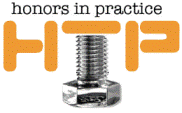National Collegiate Honors Council

Honors in Practice Online Archive
Date of this Version
2021
Document Type
Article
Citation
Honors in Practice 17 (2021), pp ix-xviii
Abstract
This journal of the plague year has attracted a record number of submissions, creating the thickest volume of Honors in Practice since its inception in 2005. The inclusion of essays in response to a Call for Papers about COVID- 19 is no doubt responsible for some of this torrent of submissions, but research essays have also come in at a greater rate than before, not to mention the “Brief Ideas about What Works in Honors.” As you will see, the essays on the pandemic’s effects on honors mostly make the best of a fraught and frustrating year for honors administrators, faculty, and students, identifying ways that the disruptions in normal routines have led to innovations and improvements. Perhaps the onrush of journal submissions is also an unexpected benefit of COVID. Despite all the inconveniences and challenges that honors educators have endured, an unintended consequence of COVID may be that they have had a kind of free time that they have not had before: time they would have spent driving to and from campus, sitting in faculty meetings, lunching with colleagues, chatting in the halls. The absence of these routine activities no doubt has had negative consequences, but Honors in Practice may have been the beneficiary of this free time. While we all look forward to putting the pandemic behind us, we can also hope that the outpouring of creative activity will be part of the new normal.
Included in
Curriculum and Instruction Commons, Educational Administration and Supervision Commons, Gifted Education Commons, Higher Education Commons, Liberal Studies Commons


Comments
Copyright © 2021 National Collegiate Honors Council